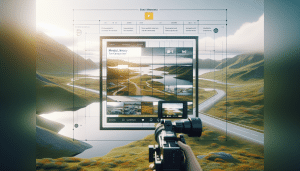Media Literacy Secrets You Rarely Hear About
Jessica White September 17, 2025
Dive into the world of media literacy and discover the overlooked factors shaping how news is consumed and understood. This guide explores how news selection, bias, fact-checking, and digital literacy impact daily life.
Why Media Literacy Is Essential Today
Media literacy has become a crucial skill for navigating today’s fast-moving news environment. With headlines bombarding people from television, social media, podcasts, and online sources, distinguishing between authentic journalism and misleading content is more challenging than ever. Media literacy provides a framework for assessing the credibility of pieces circulating on platforms, equipping individuals with the ability to recognize misinformation and understand context. This skill is vital not only for informed citizenship but also for developing critical thinking and avoiding manipulation from poorly sourced or intentionally misleading news.
The growing prevalence of online information means that everyone is exposed to a mix of factual reporting, opinion, and outright misinformation. Media literacy goes beyond basic reading skills. It involves analyzing the sources of information, understanding the motivations behind news creation, and evaluating whether the content aligns with trustworthy journalistic standards. When individuals approach news stories with a questioning mindset, they are better positioned to separate fact from speculation and resist impulsive emotional reactions to viral headlines.
Those who invest time in learning about media literacy often find they’re less susceptible to rumors, conspiracy theories, and sensational stories designed to provoke. The benefits aren’t limited to personal awareness; communities collectively strengthened by media literacy can foster intelligent discussions and collective resilience against misleading narratives. As awareness spreads, collective trust in established journalistic principles offers a foundation for social cohesion and informed public discourse.
Spotting Bias in News Reports
Every news report is shaped by the perspective of its creator and the organization’s editorial stance. Spotting bias means recognizing when language, imagery, or selection of facts tilts a story in a particular direction. Headlines, word choices, or omissions often reveal underlying leanings. Media literacy empowers readers to identify subtle cues and analyze sources, noticing if coverage is balanced or if it leans toward a specific agenda. Being aware of media bias is necessary to form accurate opinions and to engage in open-minded dialogue across societal divides.
Many media organizations cater to their audience’s expectations, introducing bias in both topic selection and framing. Comparing news from different publishers can help highlight differences in tone and emphasis, revealing editorial priorities. Tools such as fact-checking websites, neutral analysis, and direct access to primary data can offset the effects of bias. People who regularly practice checking for bias can engage with news in a more critical and nuanced way, avoiding the echo chamber effect that reinforces existing beliefs.
Learning to detect bias also involves recognizing how images, soundbites, and headlines magnify particular emotions or reinforce stereotypes. Even well-respected outlets occasionally present information in a way that shapes public opinion subtly. Media literacy courses often recommend a diverse media diet, including international outlets and public broadcasters, to ensure exposure to multiple angles. This prevents overreliance on a single narrative and leads to richer, more well-rounded perspectives.
Fact-Checking and the Fight Against Misinformation
Fact-checking is a cornerstone of journalism and a core part of media literacy. With the proliferation of social platforms and fast publishing cycles, falsehoods often spread more quickly than retractions. Reliable news involves thorough verification of sources, quotes, and statistics. Fact-checking websites and independent verification tools have become vital for discerning whether a viral claim stands up to scrutiny. Popular fact-checking resources now play a role in correcting public records and holding organizations accountable for what they publish.
Misinformation can thrive online thanks to algorithms that prioritize sensation over accuracy. Whether stories relate to politics, science, or celebrity culture, verifying their facts helps prevent the spread of rumors and manipulation. Individual learners can consult multiple news sites, official agency statements, and databases to examine accuracy. For example, checking a breaking health story against trusted medical organizations can quickly reveal discrepancies and steer readers to well-supported conclusions.
Some educational initiatives offer free resources and programs to teach communities, students, and families how to verify information effectively. This includes understanding digital footprints, using reverse image searches, and differentiating correlation from causation in statistical claims. Media literacy encourages a habit of fact-checking rather than sharing content impulsively. Over time, these skills improve the quality of public conversation and promote evidence-based decision-making.
How News Selection Shapes Perception
What gets featured in newsfeeds determines what audiences perceive as important. Editorial decisions about which stories are prominent, how they are headlined, and which voices are given space all guide public awareness and attitudes. Media literacy involves understanding how agenda-setting works and how individuals can broaden their awareness by seeking coverage beyond what is most visible. Entertainment, politics, or local events can dominate cycles, while vital topics such as science, community resilience, or international affairs receive less attention.
Selective news exposure affects not only individuals, but whole demographics. Algorithms on social platforms often present customized news, reinforcing interests and beliefs. This selection process can deepen polarization, as users see mainly stories that align with their views while missing counterpoints. Proactive news consumers build habits around exploring new topics and encountering unfamiliar voices, reducing the likelihood of inadvertently reinforcing personal biases.
Media literacy advocates suggest diversifying news sources, reading both full articles and not just headlines, and paying attention to omissions or missing context that could influence interpretation. This approach can strengthen critical thinking by challenging assumptions and inviting curiosity about the bigger picture. Consistently broadening one’s news selection is a step toward more balanced and informed perspectives on current events.
Digital Literacy and Navigating Online Information
Media literacy in the digital age depends on recognizing credible sources and unethical content producers. Digital literacy involves understanding how search engine results are ranked, how algorithms favor popularity over credibility, and how sponsored content might blur lines between advertising and news. People who are digitally literate can spot clickbait, distinguish opinion from reporting, and recognize sponsored articles, all critical for maintaining informed perspectives online.
Key digital skills include creating strong passwords, recognizing phishing emails, and identifying reliable sites. Media literacy is also about understanding privacy policies and protecting personal data while accessing news and information. Community initiatives are springing up to help adults and youth identify manipulated content, spot deepfakes, and avoid online scams. This education helps individuals remain safe, confident consumers of digital content across devices.
The volume of online news means that disengaging entirely is not a practical solution. Instead, learning to filter, evaluate, and critically engage with online content helps people stay informed without feeling overwhelmed. Improving digital skills ensures that media literacy isn’t just about avoiding misinformation, but also about adapting to a digital-first world where information is both opportunity and risk. These skills are transferable to multiple areas of life, from education to work to civic participation.
Habits for Responsible News Consumption
Developing responsible consumption habits is the final, but ongoing, element of effective media literacy. This means taking time to research claims, discussing news with others, and setting boundaries to avoid information overload. Keeping a critical mindset when reading headlines, pausing before sharing articles, and asking basic questions—like who wrote the piece and for what purpose—can dramatically reduce the risk of amplifying misinformation.
Some readers find value in using media consumption journals, tracking which sources they visit and how those sources influence mood, perception, and understanding. By reflecting on reading habits, individuals can intentionally rebalance the diversity of their inputs, seek more substantive reporting, and stay alert to potential bias. Responsible consumption is a practice, not a destination. It requires continued effort, reflection, and learning.
Media literacy advocates recommend ongoing education, peer discussion groups, and periodic review of materials from public interest organizations. There is growing recognition that no one is immune to persuasive misinformation and that lifelong learning is necessary. Over time, these habits not only improve personal vigilance but also contribute to healthier, better-informed communities prepared for the rapidly evolving news landscape.
References
1. National Association for Media Literacy Education. (n.d.). Media Literacy Defined. Retrieved from https://namle.net/publications/media-literacy-definitions/
2. Pew Research Center. (n.d.). News Use Across Social Media Platforms. Retrieved from https://www.pewresearch.org/journalism/fact-sheet/news-use-across-social-media-platforms/
3. News Literacy Project. (n.d.). Checkology: What Is News Literacy? Retrieved from https://newslit.org/essentials/
4. Stanford History Education Group. (n.d.). Civic Online Reasoning. Retrieved from https://cor.stanford.edu/
5. International Federation of Library Associations and Institutions. (n.d.). How To Spot Fake News. Retrieved from https://www.ifla.org/publications/node/11174
6. UNESCO. (n.d.). Media and Information Literacy. Retrieved from https://en.unesco.org/themes/media-and-information-literacy








